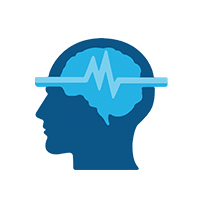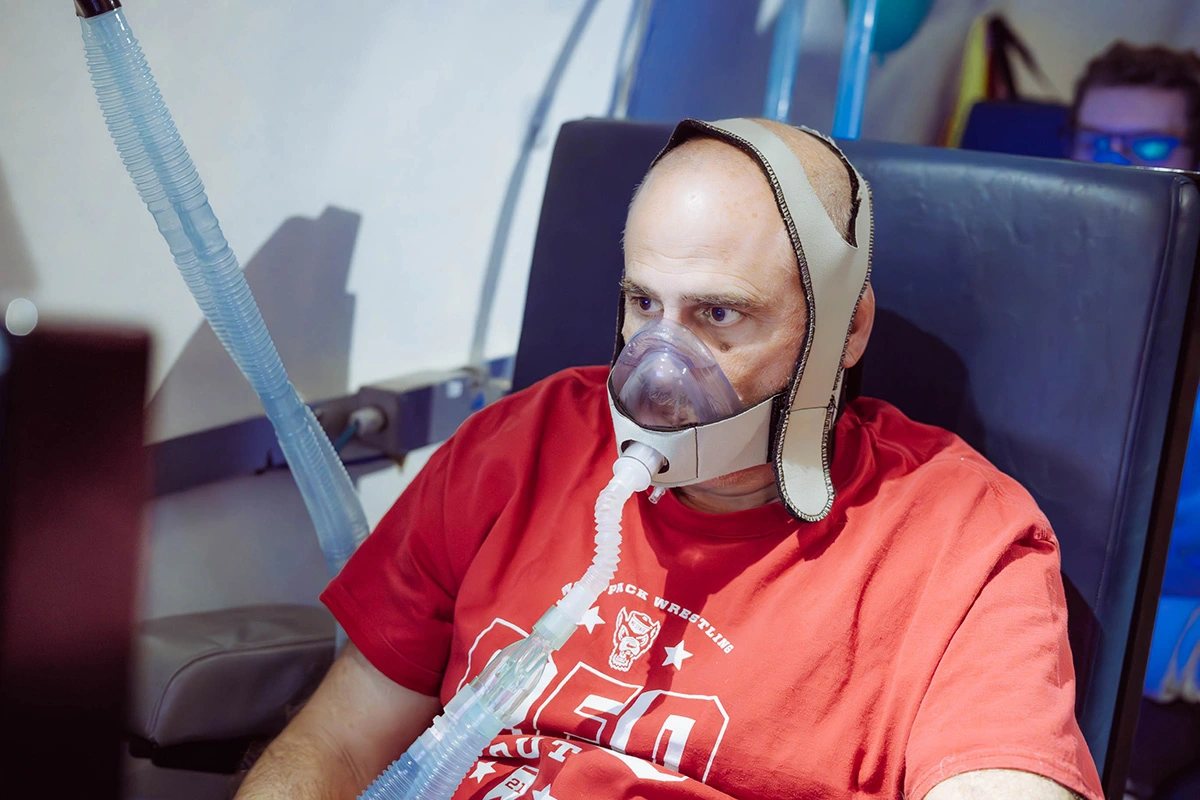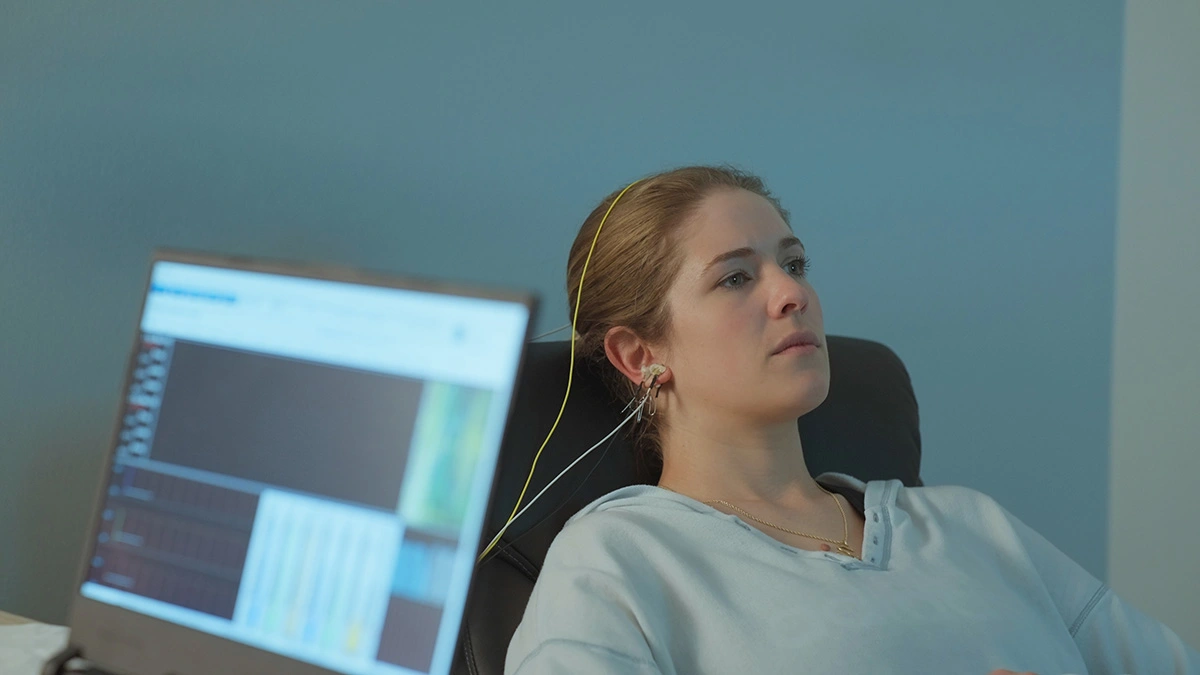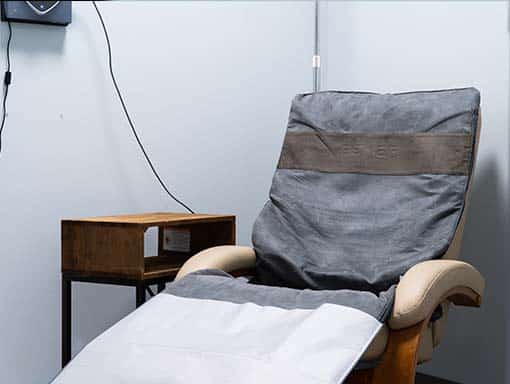Cognitive Decline
At Extivita, we understand that cognitive decline can impact every aspect of life—from memory and focus to decision-making and independence. Our mission is to support you on your wellness journey with cutting-edge therapies that may help improve cognitive function. By addressing underlying physiological factors—such as oxidative stress, inflammation, and impaired circulation—our therapies aim to support the body’s natural cognitive functions.
Each treatment offered at our clinic is grounded in scientific evidence and guided by clinical research. We provide a comprehensive and personalized approach that includes therapies such as Hyperbaric Oxygen Therapy (HBOT), Pulsed Electromagnetic Field (PEMF) therapy, and Neurofeedback Therapy. These therapies are integrated into our program to support overall wellness and are available to those seeking to explore their potential role in cognitive health.
Understanding Cognitive Decline
Cognitive decline refers to a gradual decrease in mental abilities, including memory, thinking, reasoning, and decision-making. It is a complex process influenced by age, genetics, lifestyle factors, and underlying health conditions. While occasional forgetfulness is normal, significant or progressive cognitive changes can interfere with daily life and quality of living.
Cognitive decline ranges from mild cognitive impairment (MCI) — where individuals may notice subtle changes in memory or thinking — to more advanced stages that may affect language, problem-solving, and the ability to perform daily tasks. It is important to distinguish between normal age-related changes and more serious conditions like dementia.
Common signs and symptoms may include:
- Memory loss
- Difficulty concentrating
- Difficulty with speech
- Poor judgment or decision-making
- Disorientation
Extivita Therapies for Cognitive Decline

Hyperbaric Oxygen Therapy

Nutritional IV Therapy

Pulsed Electromagnetic Field Therapy (PEMF)

Neurofeedback

Infrared Sauna
Hyperbaric Oxygen Therapy (HBOT)
Hyperbaric Oxygen Therapy (HBOT) involves breathing 100% medical-grade oxygen in a pressurized chamber, typically at 2.0 atmospheres absolute (ATA). This process significantly increases the amount of oxygen dissolved in the blood plasma, enhancing oxygen delivery to tissues throughout the body. The elevated oxygen levels promote new blood vessel formations, reduce inflammation, and support cellular repair mechanisms, all of which could be beneficial for cognitive health.
In the context of Cognitive Function, HBOT:
Enhances Cerebral Blood Flow
HBOT increases oxygen availability in the brain, which may improve blood flow and support neuronal health.
Reduces Neuroinflammation
Elevated oxygen can help reduce inflammation in brain tissues, potentially slowing cognitive decline.
Stimulates Neurogenesis
May encourage the growth of new neurons and help repair damaged brain cells.
Activates Stem Cells
Research suggests that HBOT can mobilize stem cells from the bone marrow into the bloodstream. These cells may travel to areas of brain damage, supporting tissue repair and regeneration.
Improves Mitochondrial Function
By enhancing oxygen delivery, HBOT supports mitochondrial health, which is crucial for energy production in brain cells BOT has been linked to better sperm health—including movement, shape, and DNA quality. This could be relevant for men dealing with infertility issues.
Neurofeedback Therapy
Neurofeedback is a non-invasive therapy that uses real-time monitoring of brainwave activity to help train the brain towards optimal performance. When cognitive impairment occurs—often due to factors like trauma, stress, or chronic inflammation—the brain can become “stuck” in maladaptive brainwave patterns. These dysregulated patterns can disrupt attention, memory, processing speed, and overall mental flexibility.
How Neurofeedback Supports Cognitive Decline
Neurofeedback therapy begins with an evaluation of brain activity to understand each individual’s needs. A qEEG Brain Map captures patterns across different regions and helps identify areas that may not be functioning optimally. From this data, a personalized neurofeedback program is designed. During sessions, sensors on the scalp monitor brainwaves in real time. When the brain produces healthier patterns, immediate positive feedback—such as the brightening of a screen or a tone increasing—reinforces and encourages the brain to adopt and maintain these improved patterns.
Promotes Neuroplasticity
Neurofeedback supports the brain’s natural ability to reorganize itself by creating new neural pathwas, which is crucial for adapting to cognitive challenges.
Reduces Neuroinflammation
Elevated oxygen can help reduce inflammation in brain tissues, potentially slowing cognitive decline.
Enhances Attention and Focus
By encouraging healthier brainwave activity, neurofeedback may improve concentration and reduce mental fatigue.
Support Memory and Learning
Training the brain to self-regulate can help it process and store information more efficiently, supporting better memory retention and learning.
Reduces Stress and Anxiety
By calming overactive regions of the brain, neurofeedback may also help manage stress levels, which can otherwise contribute to cognitive decline.
Nutritional IV Therapy
Nutritional IV Therapy delivers a special mix of vitamins, minerals, antioxidants, and amino acids directly into your bloodstream. This method allows for faster and more efficient absorption compared to oral intake, ensuring that key nutrients reach your cells quickly to support brain health.
How Nutritional IV Therapy Supports Cognitive Function:
Provides Essential Nutrients
Delivers vital nutrients like B vitamins, magnesium, and amino acids that are crucial for brain function and neurotransmitter.
Reduces Oxidative Stress
Antioxidants like Vitamin C and Glutathione help combat oxidative damage, protecting brain cells from stress that may accelerate cognitive decline.
Recommended IV Therapy
NAD+ Trio IV
Components: NAD+, Glutathione, Myers’ Cocktail
- NAD+ is a vital coenzyme that supports mitochondrial function and energy production in brain cells. NAD+ plays a key role in repairing DNA, regulating inflammation, and maintaining overall cellular health—all of which are critical for preserving cognitive function.
- Glutathione is a master antioxidant that helps protect brain cells from oxidative stress and free radical damage. It also supports detoxification processes, which may reduce neuroinflammation and support clearer thinking. – Magnesium and Calcium play key roles in hormone balance and support healthy uterine and ovarian function.
- Myers’ Cocktail is a classic blend of B vitamins, Vitamin C, Magnesium, and Calcium that helps support neurotransmitter production, reduce fatigue, and promote overall brain health.
Pulsed Electromagnetic Field (PEMF) Therapy
PEMF Therapy uses low-frequency electromagnetic waves to stimulate your body’s natural repair processes. These waves are delivered through a device that sends energy pulses directly to your tissues. This therapy energizes cells, boosts circulation, and helps the body recover from stress and inflammation. It’s a non-invasive treatment that supports overall cellular health and communication.
How PEMF Therapy Supports Fertility
PEMF Therapy may help improve brain health and cognitive function in several ways:
Supports Mitochondrial Health
Boosts energy production in brain cells, which is essential for focus and mental performance.
Improves Blood Flow
Enhances circulation, delivering more oxygen and nutrients to the brain.
Promotes Cellular Repair
Stimulates the body’s own repair processes to help heal damaged cells.
Enhances Neuroplasticity
Supports the brain’s ability to adapt and reorganize neural pathways.
Infrared Sauna Therapy
Infrared Sauna Therapy utilizes infrared light to gently heat the body directly, rather than warming the air around you. This method allows for a more comfortable experience at lower temperatures compared to traditional saunas, typically operating between 120°F and 140°F (49°C and 60°C). The deep-penetrating heat may promote relaxation and support overall wellness.
How Infrared Sauna Supports Fertility

Detoxification
Helps eliminate toxins that may contribute to cognitive fog or fatigue.
Stress Reduction
Promotes relaxation and lowers stress levels, which can otherwise affect brain performance.
Enhanced Circulation
Improves blood flow, delivering more oxygen and nutrients to the brain.

Supports Sleep Quality
May aid in better sleep, which is essential for cognitive function and memory.
Take the Next Step Towards Cognitive Health
At Extivita, we are dedicated to helping you address cognitive decline with a personalized and research-informed approach. Our team of experts will guide you through a tailored wellness plan designed to support your cognitive health and overall well-being.
Schedule your Free Personalized Wellness Visit today to begin your journey towards improved cognitive function. Let us partner with you to design a plan that meets your unique needs.
Medical Disclaimer: The therapies mentioned are not FDA-approved for the treatment of cognitive decline. Any use outside FDA approval is considered off-label, and patients are fully informed about the risks and limitations of therapy before treatment begins.
Schedule Your Free Wellness Visit →
References:
- Kahle, Adam C, and Jeffrey S Cooper. “Hyperbaric Physiological And Pharmacological Effects of Gases.” StatPearls Publishing, 10 July 2023.
- Gottfried, Irit, et al. “Hyperbaric oxygen treatment—from mechanisms to cognitive improvement.” Biomolecules, vol. 11, no. 10, 15 Oct. 2021, p. 1520, https://doi.org/10.3390/biom11101520.
- Mensah-Kane, Paapa, and Nathalie Sumien. “The potential of hyperbaric oxygen as a therapy for neurodegenerative diseases.” GeroScience, vol. 45, no. 2, 16 Dec. 2022, pp. 747–756, https://doi.org/10.1007/s11357-022-00707-z.
- Liang, Fang, et al. “Effect of hyperbaric oxygen therapy on polarization phenotype of rat microglia after traumatic brain injury.” Frontiers in Neurology, vol. 12, 3 June 2021, https://doi.org/10.3389/fneur.2021.640816.
- Chen, Leilei, et al. “The new insights of hyperbaric oxygen therapy: Focus on inflammatory bowel disease.” Precision Clinical Medicine, vol. 7, no. 1, 8 Jan. 2024, https://doi.org/10.1093/pcmedi/pbae001.
- Tatar, Selçuk, et al. “Hyperbaric oxygen therapy for five days increases blood-brain barrier permeability.” Undersea and Hyperbaric Medicine, vol. 44, no. 4, 1 July 2017, pp. 345–355, https://doi.org/10.22462/7.8.2017.7.
- Toda, Tomohisa, et al. “The role of adult hippocampal neurogenesis in brain health and disease.” Molecular Psychiatry, vol. 24, no. 1, 20 Apr. 2018, pp. 67–87, https://doi.org/10.1038/s41380-018-0036-2.
- Bin-Alamer, Othman, et al. “Hyperbaric oxygen therapy as a neuromodulatory technique: A review of the recent evidence.” Frontiers in Neurology, vol. 15, 9 Oct. 2024, https://doi.org/10.3389/fneur.2024.1450134.
- Huang, Xu, et al. “Hyperbaric oxygen potentiates diabetic wound healing by promoting fibroblast cell proliferation and endothelial cell angiogenesis.” Life Sciences, vol. 259, 15 Oct. 2020, p. 118246, https://doi.org/10.1016/j.lfs.2020.118246.
- Peña-Villalobos, Isaac, et al. “Hyperbaric oxygen increases stem cell proliferation, angiogenesis and wound-healing ability of WJ-mscs in diabetic mice.” Frontiers in Physiology, vol. 9, 30 July 2018, https://doi.org/10.3389/fphys.2018.00995.
- Daly, Samuel, et al. “Hyperbaric oxygen therapy in the treatment of acute severe traumatic brain injury: A systematic review.” Journal of Neurotrauma, vol. 35, no. 4, 15 Feb. 2018, pp. 623–629, https://doi.org/10.1089/neu.2017.5225.
- Gottfried, Irit, et al. “Hyperbaric oxygen treatment—from mechanisms to cognitive improvement.” Biomolecules, vol. 11, no. 10, 15 Oct. 2021, p. 1520, https://doi.org/10.3390/biom11101520.
- Thom, Stephen R., et al. “Stem cell mobilization by Hyperbaric Oxygen.” American Journal of Physiology-Heart and Circulatory Physiology, vol. 290, no. 4, 1 Apr. 2006, https://doi.org/10.1152/ajpheart.00888.2005.
- Zhang, Xiaowen, et al. “Mesenchymal stem cells and exosomes improve cognitive function in the aging brain by promoting neurogenesis.” Frontiers in Aging Neuroscience, vol. 14, 18 Oct. 2022, https://doi.org/10.3389/fnagi.2022.1010562.
- Owen, Lauren, and Sandra I. Sunram-Lea. “Metabolic agents that enhance ATP can improve cognitive functioning: A review of the evidence for glucose, oxygen, pyruvate, creatine, and l-carnitine.” Nutrients, vol. 3, no. 8, 10 Aug. 2011, pp. 735–755, https://doi.org/10.3390/nu3080735.
- Srivastava, Sarika. “The mitochondrial basis of aging and age-related disorders.” Genes, vol. 8, no. 12, 19 Dec. 2017, p. 398, https://doi.org/10.3390/genes8120398.
- Schottlender, Nofar, et al. “Hyperbaric oxygen treatment: Effects on mitochondrial function and oxidative stress.” Biomolecules, vol. 11, no. 12, 3 Dec. 2021, p. 1827, https://doi.org/10.3390/biom11121827.
- Bin-Alamer, Othman, et al. “Hyperbaric oxygen therapy as a neuromodulatory technique: A review of the recent evidence.” Frontiers in Neurology, vol. 15, 9 Oct. 2024, https://doi.org/10.3389/fneur.2024.1450134.
- Loriette, C., et al. “Neurofeedback for cognitive enhancement and intervention and brain plasticity.” Revue Neurologique, vol. 177, no. 9, 19 Oct. 2021, pp. 1133–1144, https://doi.org/10.1016/j.neurol.2021.08.004.
- Quevedo, Karina, et al. “Neurofeedback and neuroplasticity of visual self-processing in depressed and healthy adolescents: A preliminary study.” Developmental Cognitive Neuroscience, vol. 40, Dec. 2019, p. 100707, https://doi.org/10.1016/j.dcn.2019.100707.
- Gu, Yue, et al. “Improving attention through individualized fnirs neurofeedback training: A pilot study.” Brain Sciences, vol. 12, no. 7, 29 June 2022, p. 862, https://doi.org/10.3390/brainsci12070862.
- Jiang, Yang, et al. “Sharpening working memory with real-time electrophysiological brain signals: Which neurofeedback paradigms work?” Frontiers in Aging Neuroscience, vol. 14, 28 Mar. 2022, https://doi.org/10.3389/fnagi.2022.780817.
- Chen, Chao, et al. “Efficacy evaluation of neurofeedback-based anxiety relief.” Frontiers in Neuroscience, vol. 15, 28 Oct. 2021, https://doi.org/10.3389/fnins.2021.758068
- Campbell, Jared M. “Supplementation with NAD+ and its precursors to prevent cognitive decline across disease contexts.” Nutrients, vol. 14, no. 15, 7 Aug. 2022, p. 3231, https://doi.org/10.3390/nu14153231.
- Aoyama, Koji. “Glutathione in the brain.” International Journal of Molecular Sciences, vol. 22, no. 9, 9 May 2021, p. 5010, https://doi.org/10.3390/ijms22095010.
- Peng, Lihong, et al. “The effect of pulsed electromagnetic fields on angiogenesis.” Bioelectromagnetics, vol. 42, no. 3, 6 Mar. 2021, pp. 250–258, https://doi.org/10.1002/bem.22330.
- Ross, Christina L., et al. “The use of pulsed electromagnetic field to modulate inflammation and improve tissue regeneration: A Review.” Bioelectricity, vol. 1, no. 4, 1 Dec. 2019, pp. 247–259, https://doi.org/10.1089/bioe.2019.0026.
- Urban Float. “BUS Study: How Infrared Saunas Can Help You Detox Heavy Metals.” Urban Float, https://www.urbanfloat.com/blog/bus-study-infrared-saunas-are-a-powerful-detox-tool
- Chang, Ming, et al. “A study on neural changes induced by sauna bathing: Neural basis of the ‘Totonou’ State.” PLOS ONE, vol. 18, no. 11, 27 Nov. 2023, https://doi.org/10.1371/journal.pone.0294137.





